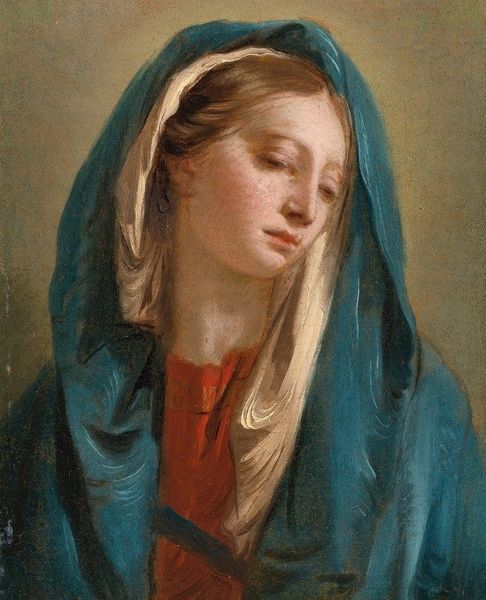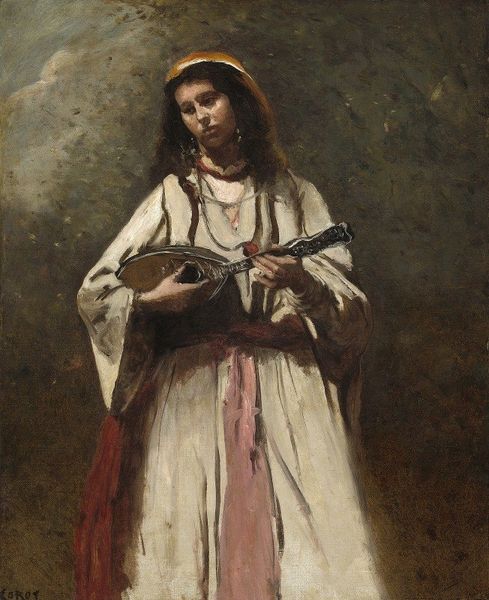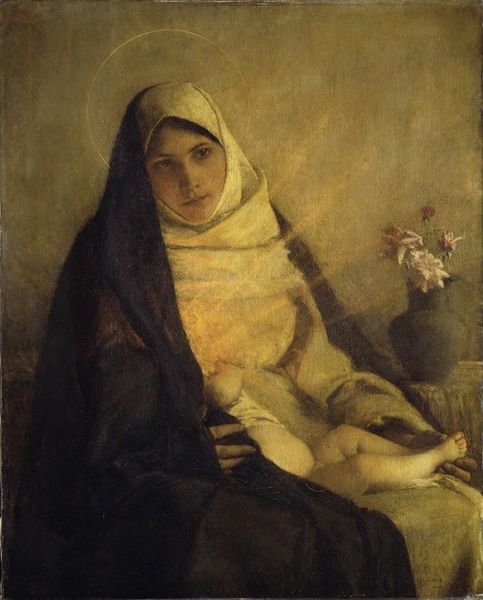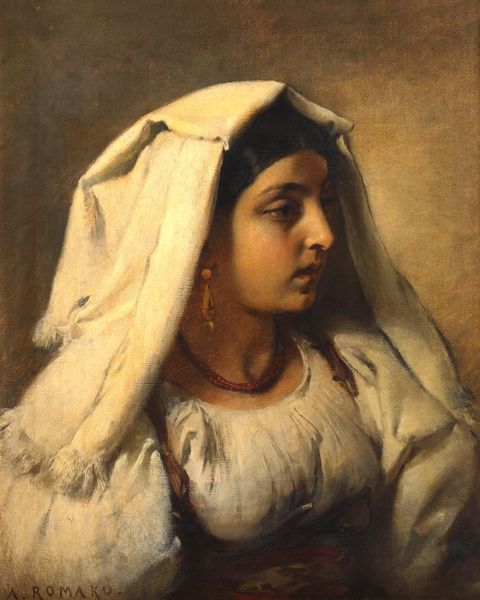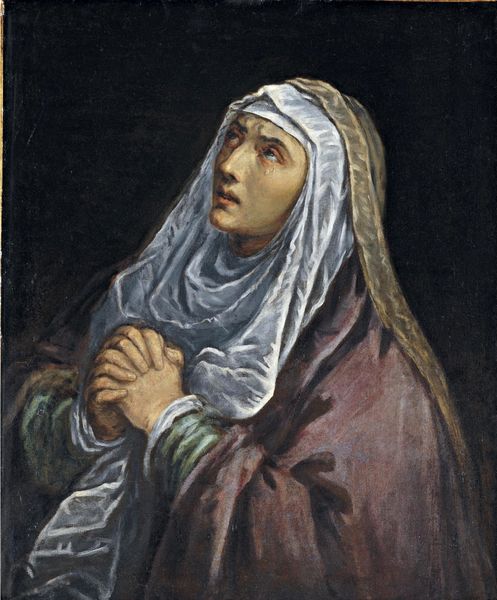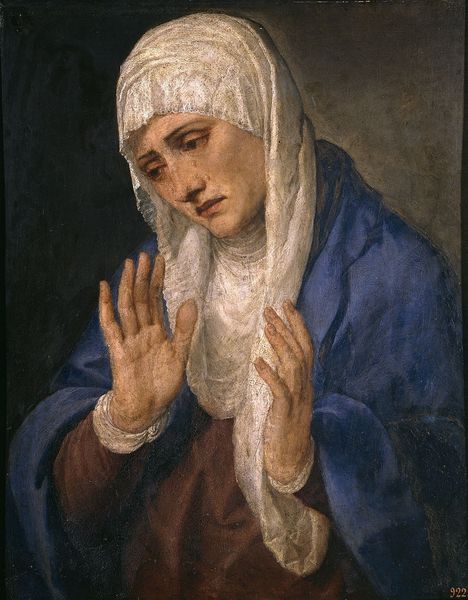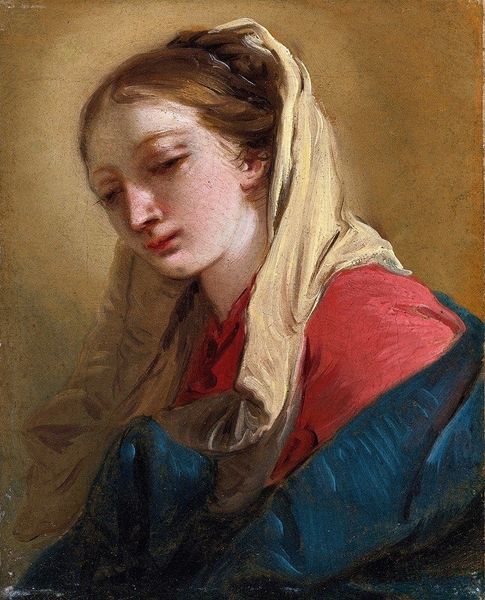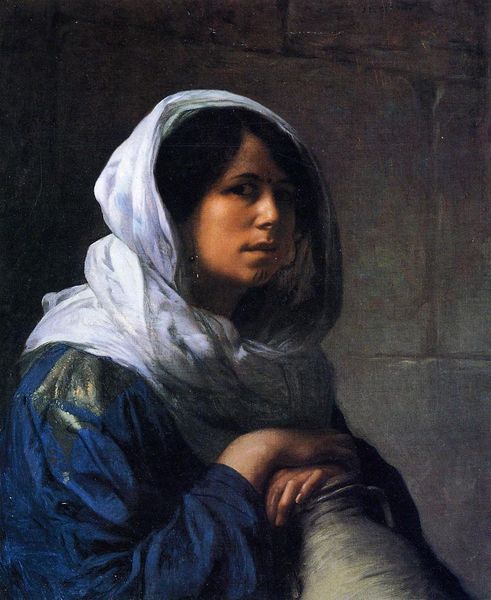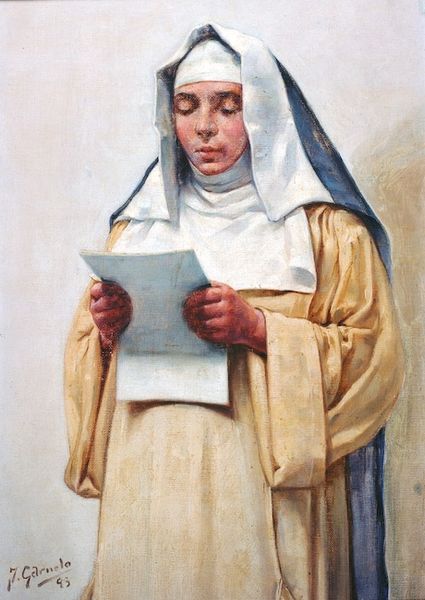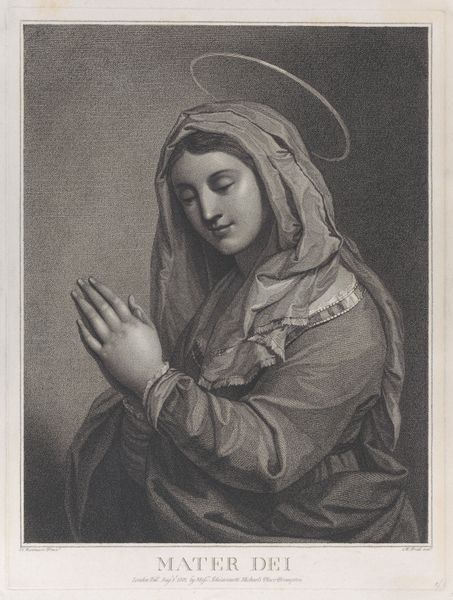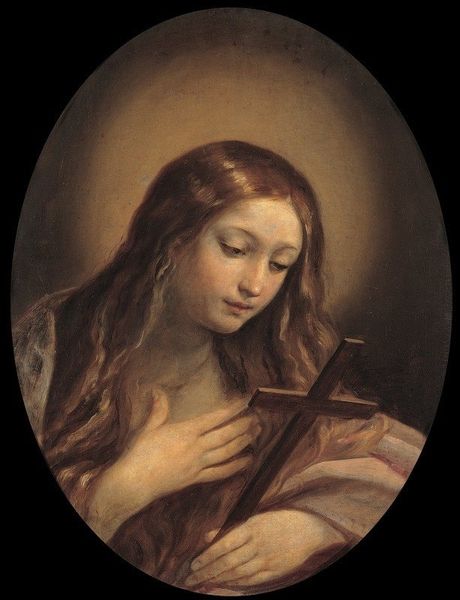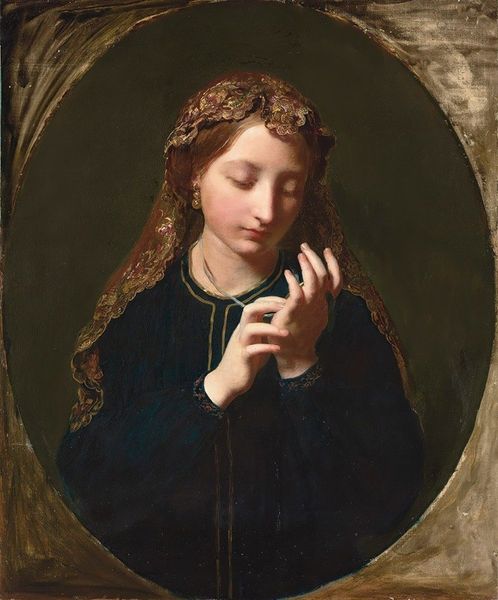
Dimensions: 37.8 x 28.3 cm
Copyright: Public domain
Curator: Immediately, I'm struck by how intimate this painting feels. Editor: That’s Jules Breton’s 1854 painting, "Young Woman Praying in Church". It offers an interesting glimpse into 19th-century depictions of piety and femininity. We can explore it together from the perspective of devotional iconography, considering both its surface appearance and underlying cultural narratives. Curator: There is something really tender about the way she is posed; seated demurely in the simple chair with her hands clasped, head covered in the way that implies humility. This visual vocabulary evokes powerful cultural connotations around gender and faith, particularly when thinking of 19th century ideas about the roles women were expected to occupy. It is fascinating how images become culturally weighted with this specific symbolism over time. Editor: I think there's also a subtle tension here, too. Note her gaze - she isn't looking downwards in expected subservience. Her head is slightly upturned and to the right, conveying perhaps a desire or longing that the space for women and agency at the time were not receptive to or accepting of. It is important to note that visual piety of the era existed not in a vacuum, but in a cultural system which constrained women politically and socially. How does that read through in a 19th century piece like this? Curator: Interesting point. The headscarf itself can function as a symbol, both of piety and of the limited freedoms imposed on women of the time. Also, it functions in this case almost like a halo or even some sort of aspirational, near-sacred vision of female selflessness. How that operates within larger sociopolitical trends and cultural expectations is an ongoing conversation. The painting, with its subtle gestures and cues, contributes to an ongoing visual and social narrative. Editor: I agree that this contributes to a narrative, though I also can’t ignore that the woman’s upturned gaze suggests some hope despite such impositions. Breton provides a symbol which represents cultural expectations of piety and submission while at the same time implying some tension and desire that hints at resistance or dissatisfaction. This could indicate changing sentiments around identity and power during the 1850s. Curator: Thank you. Analyzing art through the lens of its historical symbolism opens us up to so much dialogue with not only the artist’s intentions, but society itself. Editor: Yes, indeed. This exchange reminds us how powerfully these dialogues through art expand the potential for understanding ourselves and the worlds around us.
Comments
No comments
Be the first to comment and join the conversation on the ultimate creative platform.
